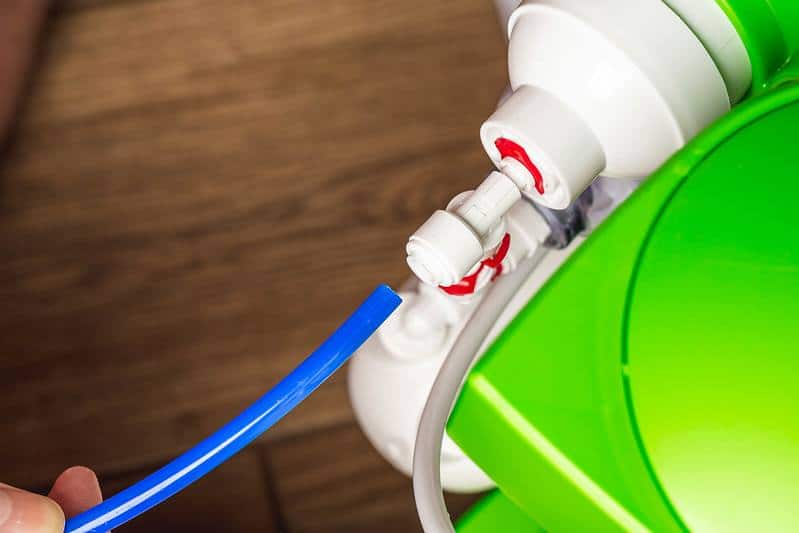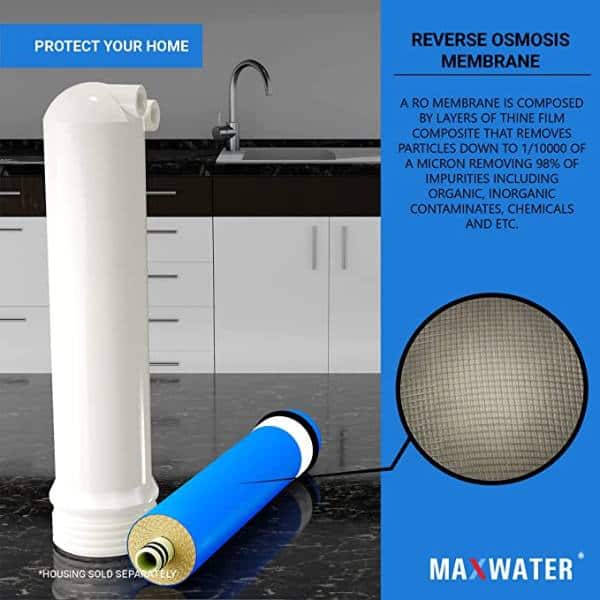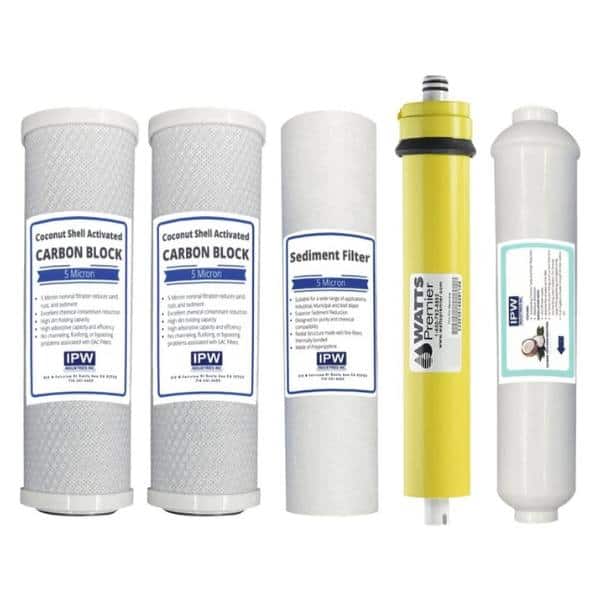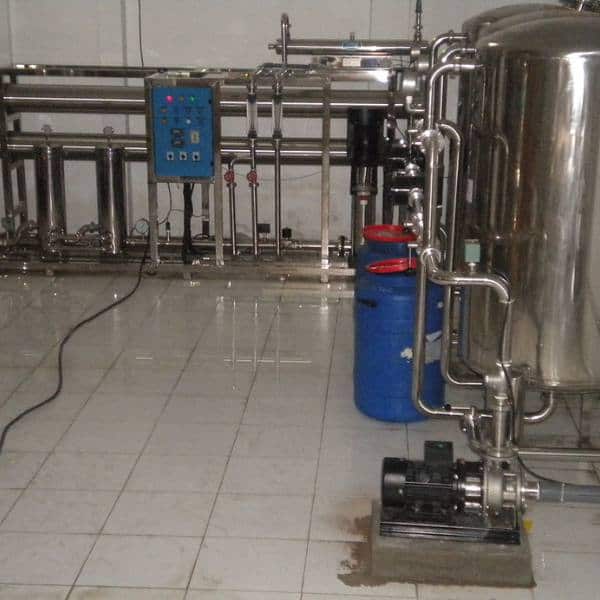What Is The Function Of Reverse Osmosis Filters?
The best RO water filters will serve the vital purpose of cleaning our water. This process starts by forcing water through a semi-permeable membrane, which passes clean water molecules through and holds back others, like salt and other large molecules that can’t make it through the filter. The result of the storage tank is much safer to drink and free of unnecessary minerals.
There are numerous beneficial aspects to utilizing reverse osmosis filtration – not only do they help reduce contamination in our drinking water, but they also help improve its taste and clarity as well as reduce scale buildup in plumbing fixtures from hard water.

Additionally, because reverse osmosis filtration requires such little maintenance, it’s an economical choice for those looking for a reliable water filtration system. With all the beautiful benefits of using a reverse osmosis filter, it’s no wonder why so many more people are choosing to use them in their homes every day!
How To Change Reverse Osmosis Filters – A Step-By-Step Guide
Changing the carbon and sediment filters in your home or office space can sound intimidating at first, but with a few simple steps, you’ll be feeling confident before you know it.
Purchase The Right Replacement Filter
The first step to changing a reverse osmosis filter is finding the type of replacement filter you need. Check the make and model number on the unit itself or contact your water filtration service provider for assistance. Once you have ordered the right size and type of replacement filters, it’s time to get started!
Turn Off The Water Supply
Before you start making any changes, be sure to turn off the water supply which feeds into the reverse osmosis system, to prevent any leaks or water damage. Once you’ve shut this off, you can disconnect and remove the old filter.
Flush Out All Water From The System
Flushing out all the remaining water from the system is essential to preventing any blockage or clogging in your lines. You can do this by opening a nearby tap and letting it run until only air comes out. This should take around 10 minutes of running time, depending on the size of your setup.
Take Out The Old Filters
Once the water has been fully flushed out, you can remove the old filters. You’ll want to unscrew them from their housing, taking care to be gentle and not force anything stuck. After they’re removed, you can dispose of them responsibly.
Remove & Clean O-Rings
It’s essential always to remember to remove the old O-rings before installing the new filters. This is necessary to ensure a proper seal and prevent leaks. Once you have removed them, be sure to clean off all residue before replacing them with new O-rings that come bundled with your replacement filter set.

Clean Filter Housing
Sanitizing your RO system is also crucial. After removing the old O-rings, you’ll also want to take a few moments to clean the filter housing itself. This can be done with a damp cloth and some all-purpose cleaner that won’t damage any of the parts inside. Be sure to go around all edges and crevices of the housing as well!
Lubricate O-Rings
Once you have cleaned the filter housing, it’s time to lubricate the new O-rings. You can use food-grade silicone lubricant or any mineral oil for this task.
Insert New Filters
The next step is to insert the new filters into the housing. Ensure you line up the O-rings correctly with the grooves and tighten them until they are snug but not overly tight.
Connect Water Supply & Test System
Finally, you can reconnect your water supply and test the system to ensure it’s working correctly. Run a small amount of water from a nearby faucet for a few minutes. If there are any leaks or blockages in the lines, take care of these issues before proceeding.
Once everything runs smoothly, you can enjoy the fresh, filtered water your reverse osmosis system provides!
Maintaining a reverse osmosis system is important for ensuring efficient and safe water filtration. Taking the time to change your filters regularly can help keep your system running smoothly and provide you with all the benefits of clean, filtered drinking water.
Changing RO Membrane
In addition to changing the carbon and sediment filters, you’ll need to replace your reverse osmosis membrane every two years. The RO membrane removes contaminants from your drinking water, so keep this part of your system well-maintained.
- To do so, you’ll want to ensure that you use the correct size and type of RO membrane for your system.
- Once you have the right one, you can disconnect the old membrane from the membrane housing cap, taking care not to damage it.
- After that, you can insert the new membrane and reconnect all the fittings before turning on the water supply again.
- Finally, be sure to check for leaks and run a few minutes of water to make sure the system is working correctly.

Why Should You Change Reverse Osmosis Filters?
Changing reverse osmosis filters is essential to ensure that they’re operating effectively and can provide clean healthy drinking water. An old filter can lead to clogging and poor filtration, leading to unsafe water quality.
It’s essential that you always use the correct type of filter for your home’s reverse osmosis system to reduce exposure to contaminants like bacteria, viruses, cysts, and other organisms. Once you have done RO installation, a regular replacement of filters will keep your system running optimally and help to prevent the build-up of contaminants not filtered out by an old filter.
A reverse osmosis filter should be replaced every 6-12 months, depending on how much water is used and the condition of your water supply. If your municipality uses chloramines or high chlorine levels, a more frequent replacement may be necessary for optimal performance. With regular changing of reverse osmosis filters, you and your family can enjoy refreshingly clean-tasting and safe drinking water without worry!
How Often Should You Replace Reverse Osmosis Filters?
When it comes to the longevity and performance of your reverse osmosis or RO system, regular replacement of the filters is key! The lifespan of a reverse osmosis filter varies depending on how frequently it’s used, how well-maintained it is, and what type of contaminants are in your water supply.
Generally speaking, sediment filters should be changed at least every six months, while prefilters, carbon filters, and post-filters can last anywhere from 12 to 18 months.
It’s important to remember that the recommendations provided by most manufacturers are an estimate— tangible indications that it’s time to change out a filter include decreased water pressure and lower water quality output. Sooner rather than later is always best when it comes to replacing RO filters— staying on top of maintenance will ensure you’re getting clean drinking water with every use!
Carbon Filter
You should change the activated carbon filter every 6 – 9 months. Carbon filters reduce the taste, odors, and chlorine in your drinking water.

Sediment Filter
The sediment filter should be changed every 6 – 12 months. This helps to ensure that dirt, rust, and other particles are kept out of your drinking water.
Polishing Filter
You should replace the polishing filter every 6 – 12 months. This filter helps eliminate any contaminants that may have passed the other two filters.
RO Membrane
Your reverse osmosis membrane should be replaced every two years. The membrane is responsible for removing contaminants from your drinking water, so it’s essential to keep this part of your system well-maintained.
How Much Should You Expect To Pay For Replacement Filters?
Regarding the cost of replacing your reverse osmosis filters, the prices can vary depending on the type and size of filter you need.
Generally speaking, you should expect to pay anywhere from $10-$30 for a sediment filter, $20-$50 for a carbon filter, and around $100-$200 for an RO membrane.

FAQs
What happens if I don’t change my filters regularly?
Not changing your filters regularly can result in poor water quality output and an inefficient system. It’s essential to replace your filters according to the manufacturer’s recommended timeline to ensure you get clean, safe drinking water with every use.
How often should I sanitize my reverse osmosis system?
Depending on your system and water supply, you should sanitize your RO system at least once yearly. Check with your manufacturer for specific instructions.
What’s the best way to store my replacement filters?
The best way to store your replacement filters is in a cool, dry place away from direct sunlight. Ensure the filters are in a sealed container or package to prevent dust and dirt from getting in.
What type of filter do I need for a reverse osmosis system?
Reverse osmosis systems typically include sediment filters, carbon filters, post-filters, and an RO membrane. Depending on your specific system and water supply, you may need additional or different filters.
Final Word
Maintaining your reverse osmosis system is essential for optimal performance and drinking water quality. The key to keeping it running efficiently is regular filter replacement— make sure you’re changing out sediment, carbon, and post-filters according to the manufacturer’s recommendations, and replace the membrane every two years.
Keep in mind that different systems may require different filters, so it’s essential to check with your manufacturer for any specific instructions.

